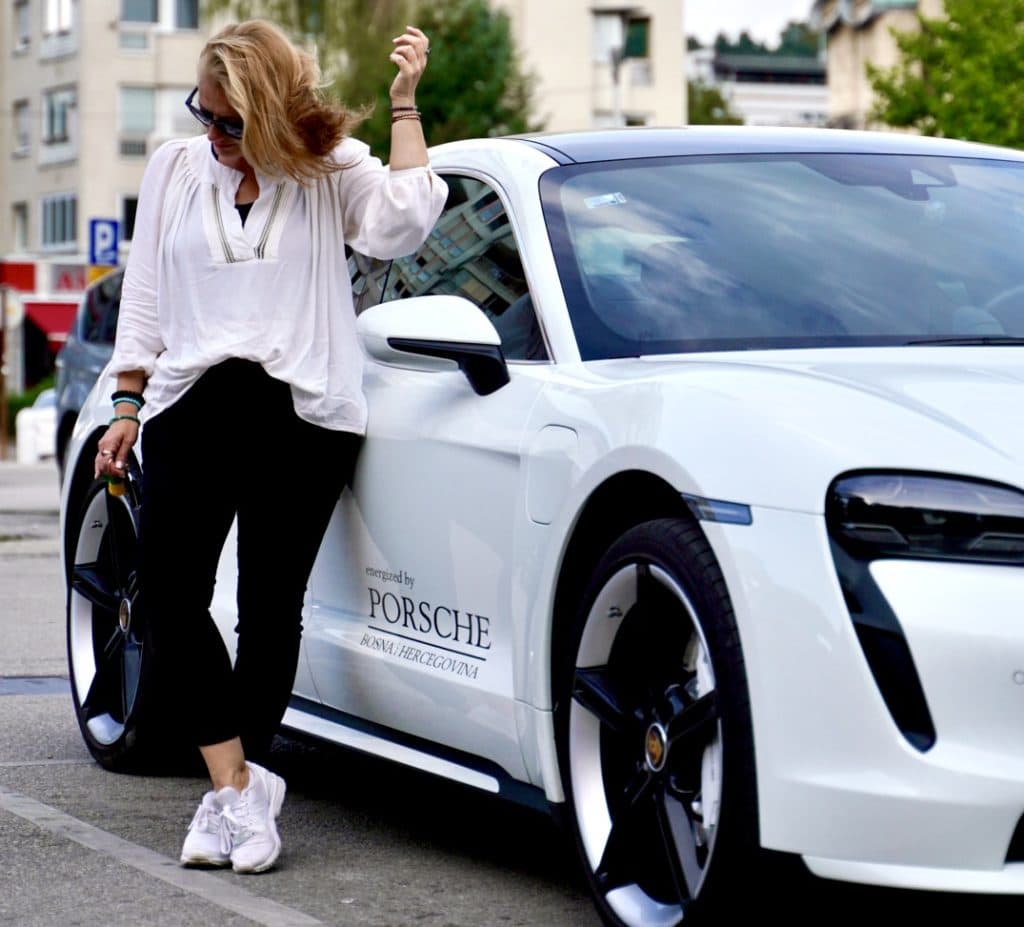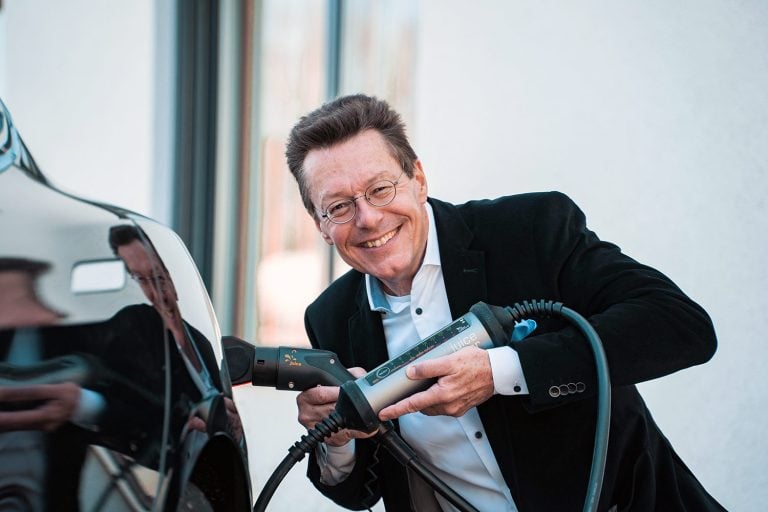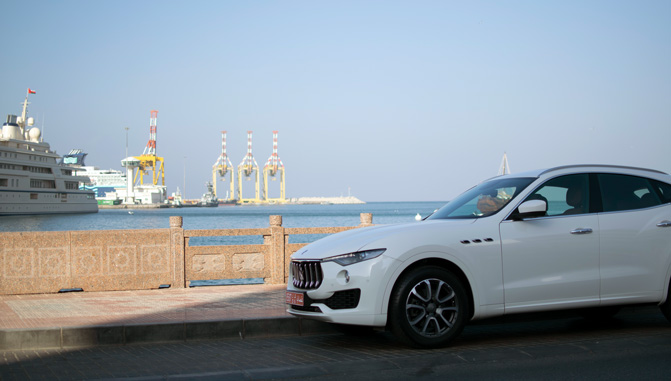Porsche Taycan Turbo – Emission-free on a sporty mission

On the occasion of Porsche Sport’s 75th birthday

Freeway A8 Munich-Stuttgart. It’s Sunday morning and my Porsche Taycan Turbo with 680 hp is flying almost lonely over the highway. 250 km/h are quickly reached. I feel the gentle centrifugal force and the adrenaline in my blood rises higher and higher! Pure happiness!
I also feel lucky because I can test this electric model from the legendary house of Porsche over a long distance. I remember the first time I saw him. That was in September 2018 for Porsche Sport’s seventieth birthday in Graz, Austria. We journalists were allowed to drive current, but also historical treasures from the Porsche Museum. And then there was “the new one” on display – the prototype of the Porsche Taycan! Touch yes, put in no! In innocent white he shone in front of the entrance to the luxury hotel. Yes, he looked different from all his ancestors. Purist design with unmistakable Porsche DNA.

It took me five years to be able to drive it. The wait was well worth it. I smile as I press the gas pedal even harder in Drive Mode Sport Plus. The Taycan seems to lie on the road without touching it. I love the silence of the car. So I can listen to my music, which is blasting out of the speakers in time with my high speed. And if you do want to make yourself heard, you can activate the sound generator, which is available to order (standard on the Turbo). And already the elegant hum is transformed into a roaring sound.
“An all-electric beast that carries the legendary sporty spirit of Porsche“
Mark Webber

Expectations for the Taycan were greater than for any other electric car that came onto the market. But the public and also we journalists had to be patient. The world premiere was not until a year later in September 2019. Then, in March 2020, the first big moment with the sporty e-stromer. Interview with former Formula 1 driver Mark Webber about the Porsche Taycan. We meet in the archive of the Porsche Museum in Stuttgart. For the brand ambassador, it’s ‘an all-electric beast that carries the legendary sporty spirit of Porsche,’ he tells me. He now shares his knowledge and years of experience as a racing driver with the best international engineers at Porsche. And this knowledge is also found in the Taycan.

Only a few were allowed to enter the hallowed halls of the museum archives, where hundreds of valuable models from all decades are stored. Of course, there is also a Porsche 356 “No. 1” Roadster, the very first sports car from Porsche! Already a sensation 75 years ago, it has remained so to this day. I lean deeper into my bordeaux-colored sports seat of the Taycan, which is the first all-electric sports car and represents a milestone in the history of Porsche. Even if some doubt it – he is a legend, just like his first ancestor 75 years ago!
“I couldn’t find the sports car of my dreams, so I built it myself.” Ferry Porsche
Ferry Porsche

(Photo: Porsche AG)
When Ferry Porsche decided to build a master-class sports car after World War II, he was declared insane. Who would buy such a car? People are poor and everyone is focused on building a cheap “people’s car”. Also some necessary materials were not available. But Ferry, son of company founder Ferdinand Porsche, was undeterred: “I couldn’t find the sports car of my dreams, so I built it myself.” He believed in his dream and managed to realize it together with his team. On June 8, 1948, the 356 “No. 1” Roadster received its operating license and was thus the first sports car from Porsche. And where has Ferry’s vision taken the company? There is no need to write about that.

In the meantime, I have arrived in Zusmarshausen, a town between Munich and Stuttgart. There you will find the Sortimo Innovation Park, the largest charging station for e-cars in Europe. Up to 2000 e-cars per day can charge at 76 charging stations, 36 of which are super fast chargers. My Taycan is currently getting superpower from one of the futuristic looking hyperchargers. With the maximum charging power of 270 kW, thanks to its Performance Battery Plus with a gross capacity of 93.4 kWh, charging from 20% to 80% takes less than 20 minutes.
But what do I do in Germany with a Porsche Taycan Turbo from Porsche Center Sarajevo? I have an appointment in Slovenia. And as a brand ambassador for Porsche BiH, I test their electric models. This time it was the Taycan’s turn. Since 2021, I have only been testing e-cars. And mostly over long distances. It is important to me to travel as sustainably as possible. My experience over the past few years cleared up prejudices against every e-car I tested. I manage to do the same with the Porsche Taycan Turbo.

Even starting a Porsche is unique. The same applies to the electric Game Changer: Press the start button to the left of the steering wheel. Of course, I can’t resist and press the gas pedal first. I can feel the weight of the car, but the acceleration from 0-100 km/h in 3.2 seconds makes it disappear. My trip from Sarajevo to Nova Gorica in Slovenia goes smoothly. It’s already April, but still cold. My thermometer shows 5 degrees Celsius at the start and it is snowing. No problem for the all-wheel drive. My range is 315 km. The battery is charged to 85%. After almost 2 hours I reach Doboj. Average consumption: 23.2 kWh/100km. Although I still have plenty of energy with 175 km range to the Croatian border. Nevertheless, I take a breakfast break and charge my Taycan at the Porsche Destination Charger in the Park Hotel. A total of 42 such charging stations can be found well distributed throughout Bosnia and Herzegovina. I charge twice more before reaching my destination: in Kriz, Croatia, at a DC charging station shortly after the border, and at the Ionity charging station in Zagreb. I usually drive at 130 km/h on the highway. My average consumption: about 25 kWh/100km.

After a few days, I continue my journey to Munich in Germany. I’m curious where the fuel consumption will be when driving on the German autobahn. There is no speed limit here and a good opportunity to test the performance. Arriving in Austria, the mountains and Alps greet me with snow. Spontaneously it does not go directly over the highway to Salzburg. I decide to take the serpentines over the pass to Obertauern. I fully charged the Taycan at Ionity just before the Slovenian-Austrian border and it shows me a range of 292 km. Now it will be exciting to see how much energy it uses uphill.

I drive up the serpentines. Thanks to the all-wheel drive, the car lies like a stable board on the road. Although it is said again and again that the high weight due to the batteries is noticeable during braking. I can’t feel anything from it. Despite the snow, the roads are dry and the sun is shining. I can step on the gas a little more and drive into the corners at a higher speed. The car is stable. I feel like I’m on a circuit. I alternately operate the gas and brake. I don’t want to stop at all. The acceleration and deceleration – these two opposing forces transmitted from the car to me – pure goosebumps!

Once we reach the bottom, we get back on the highway in the direction of Germany. I arrive at the Porsche Center Inntal shortly after the German-Austrian border with a range of about 30 km. Thanks to recuperation on the downhill of the pass, my range increased from 292 km to 320 km. With a full battery charge, we now head for Munich, 60 km away. The highway is pretty empty. In sport mode, I drive toward the sunset. My consumption is very high as expected. The average consumption at an average speed of 200 km/h is 41.6 kWh/100km.

Well, that’s not sustainable either, even if the energy at most charging stations in Austria and Germany comes from renewable sources and thus from green electricity. But how often do we really drive that fast? Rare! Even in Germany, the only country in Europe that does not (yet) have a speed limit, fast driving in everyday life is hardly possible due to heavy traffic and congestion. But as a passionate driver and sports car enthusiast, it gives me a good feeling that I have a sustainable car with which I can legally push the limits for a change. And yes, the fun factor is priceless!
“We build cars that nobody needs but everybody wants.”
Ferry Porsche

My Porsche Taycan Turbo has one last hurdle to clear. On my return trip, I will not stop for an overnight stay between Augsburg and Doboj. I want to drive about 900 kilometers in one day. Will I make it or despair? Result when I arrived: 11 hours for 906.6 km, of which 1.5 hour was needed for charging. In total, I have charged four times at an Ionity fast charging station up to 80%. Charging costs for the return trip in total: about 135 €. I wonder what a sports car with an internal combustion engine would consume? Certainly more!

Yes, the Taycan Turbo is already a Porsche legend for me, too. Design, performance, acceleration – all new without losing the unique Porsche DNA. This electric extreme athlete also testifies to the genius of a human brain, what it is capable of creating to take into account well-being of people and nature. By 2030, 80% of Porsche vehicles are to have an electric motor. Nothing new, really, since the electric drive is deeply anchored in the Porsche DNA. The very first Porsche built by Ferdinand in 1898 had an electric motor. In 1900, the Lohner-Porsche electric car with the innovative electric wheel hub motor is presented at the World’s Fair in Paris. With 2 x 2.5 hp, it reaches a top speed of 37 km/h. The reason he chose an electric model was that the air was being “mercilessly spoiled” by the gasoline engines that were appearing in large numbers. This 123-year-old statement has lost none of its relevance. It’s just that Porsche didn’t have the technology for an ideal solution back then, especially with regard to the car’s high weight. But that’s what the past is for, to learn from it and develop further. The Porsche Taycan Turbo is a dazzling example of successful implementation. As Ferry Porsche once said, “We build cars that nobody needs but everybody wants.” Looking back at the beginnings to the present, the future seems promising! Happy Birthday Porsche!

Road Trip Details:
Days: 7
Length: 2872 km
Itinerary: Bosnia-Herzegovina-Croatia-Slovenia-Italy-Austria-Germany
Cost store: 335,99 €
Cost vignettes: 96,70 €
Details of the Porsche Taycan Turbo:
*Taycan Turbo: electricity consumption combined 26.0 kWh/100 km (NEDC); 23.6 – 20.2 kWh/100 km (WLTP); Combined CO2 emissions 0 g/km | Status: 04/2023
500 kW/680 hp
850 Nm
Price from 97.429 €
The report was created in cooperation with Porsche Centar Sarajevo and Porsche BiH.






